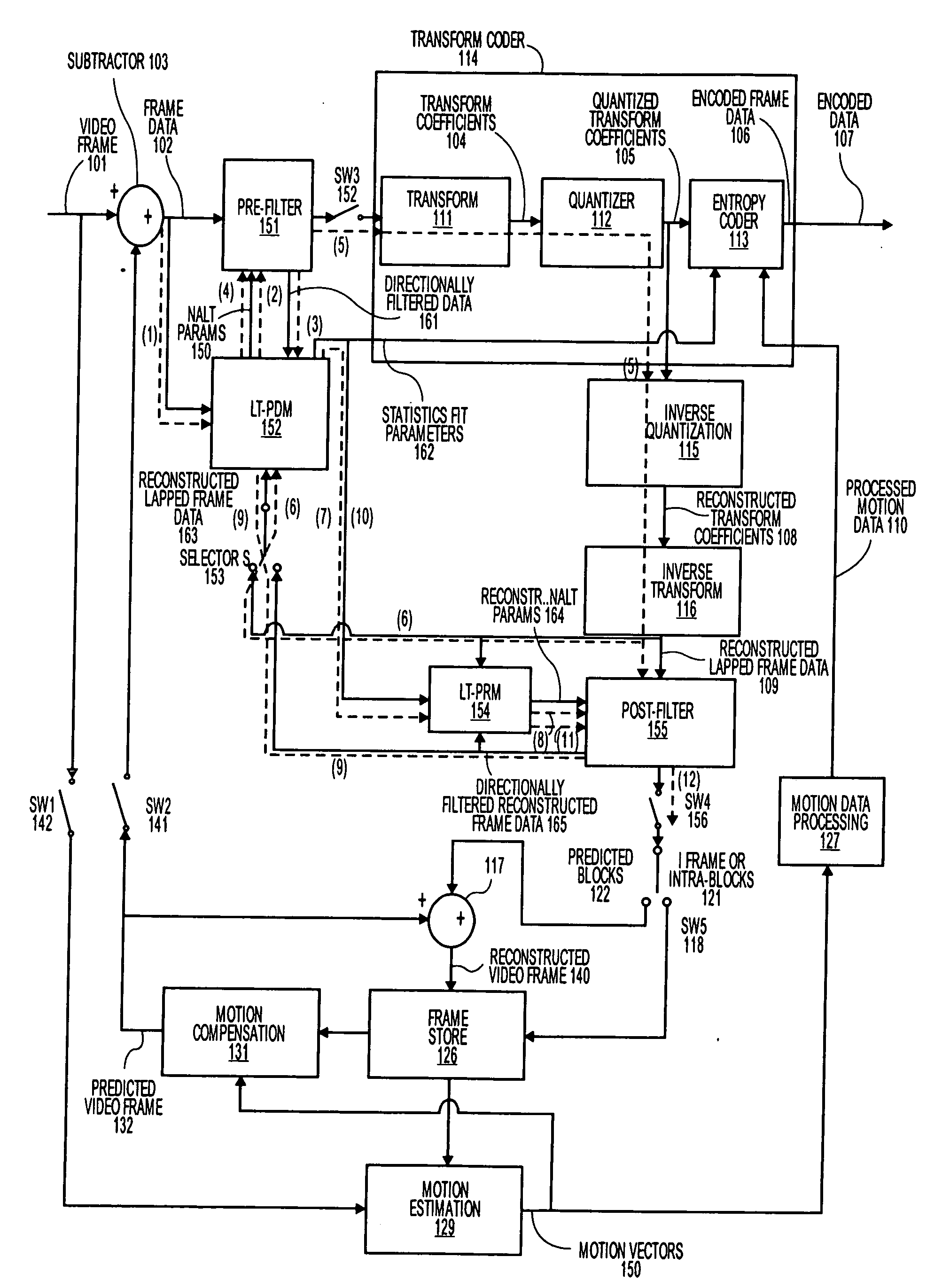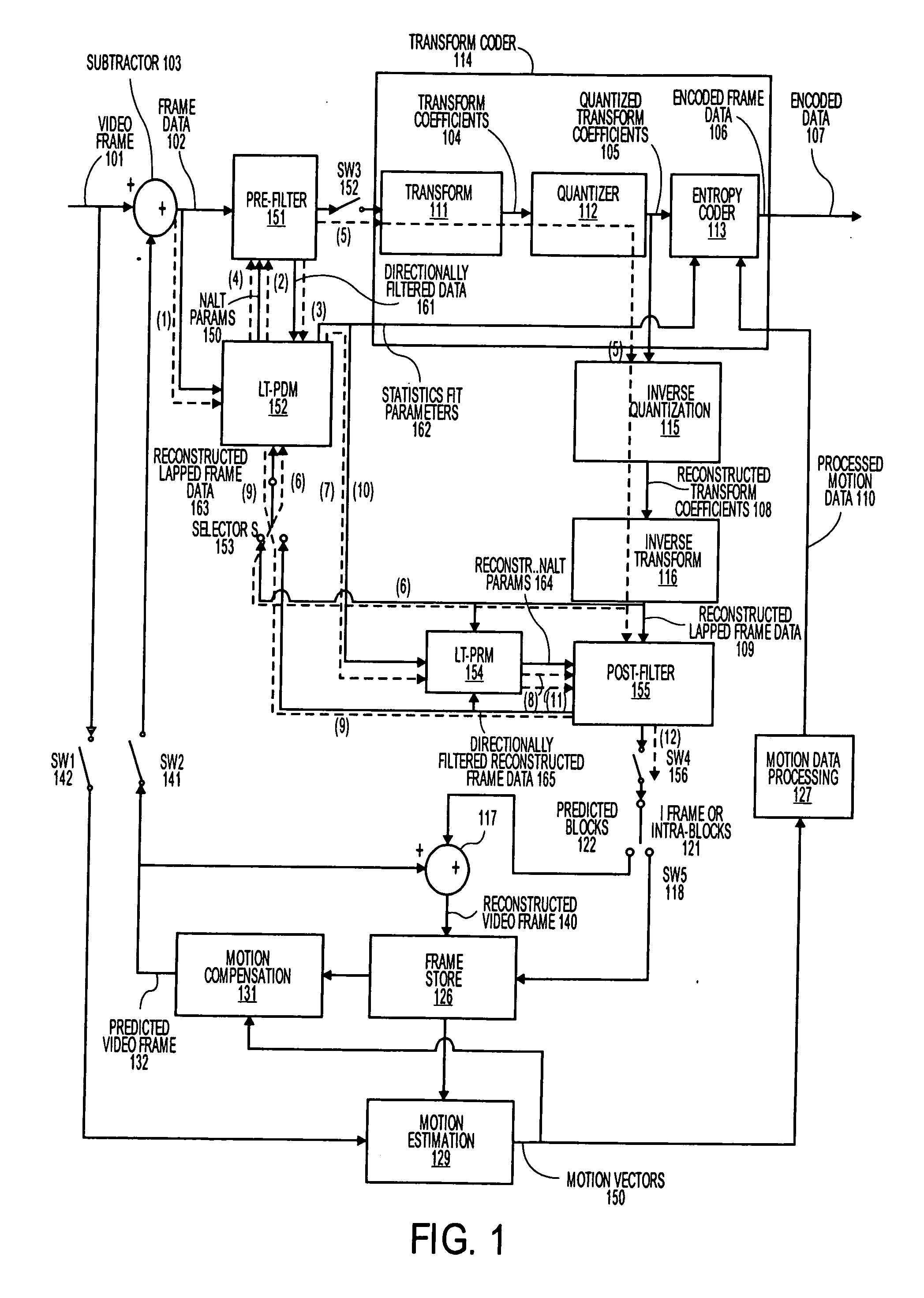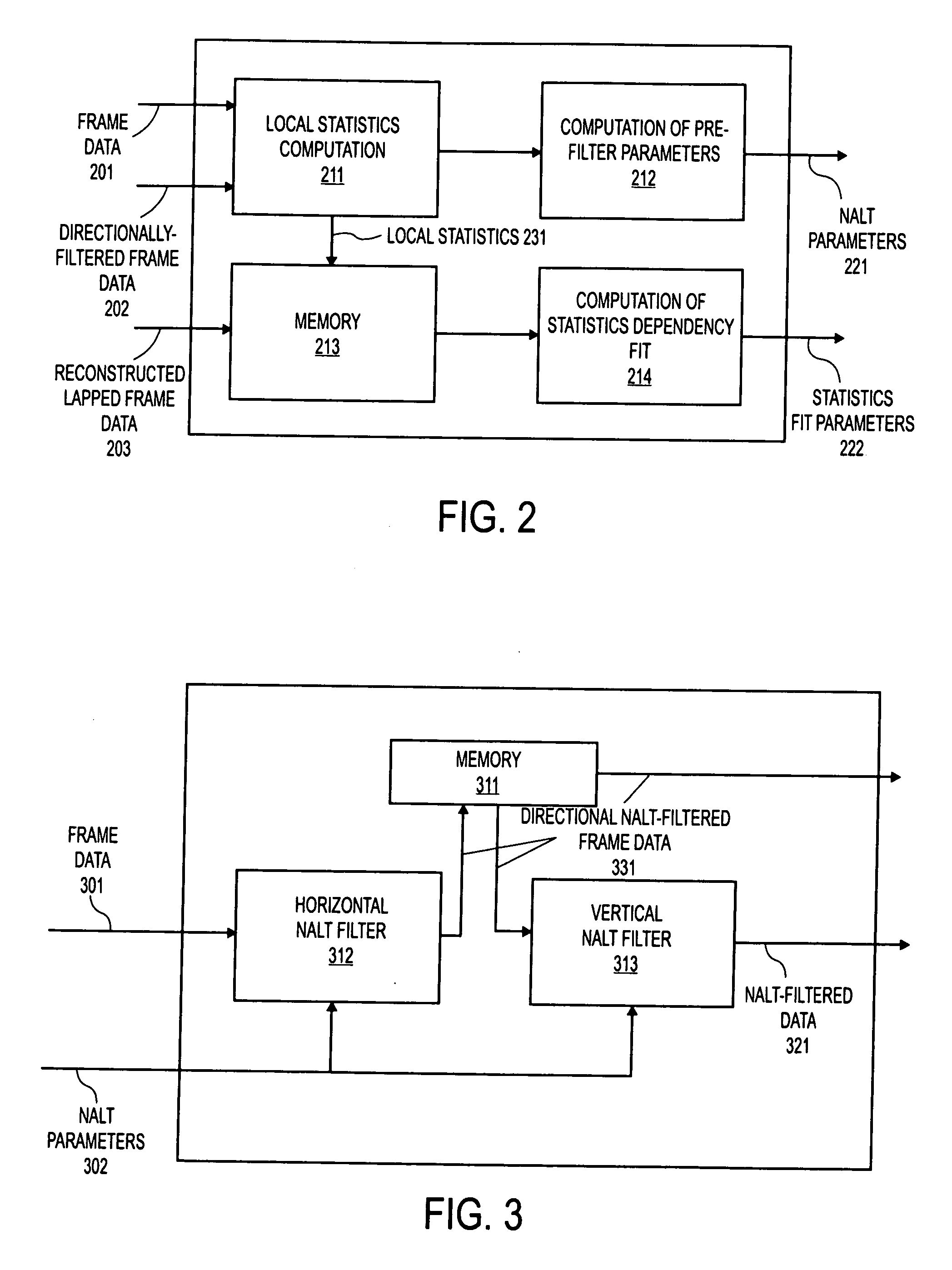Method and apparatus for lapped transform coding and decoding
a technology of lapped transform and coding, applied in the field of lapped transform coding, can solve the problems of limiting the coding performance, undesirable blocking artifacts visible in the reconstructed image, and blocking artifacts that remain in the imag
- Summary
- Abstract
- Description
- Claims
- Application Information
AI Technical Summary
Problems solved by technology
Method used
Image
Examples
Embodiment Construction
[0025] A method, apparatus, and article of manufacture for deriving and using non-linearly adapted lapped transforms (NALTs). In one embodiment, the determination of the NALT is based on the adaptation of the basis functions of the transform in the encoder to local statistics of the image, and the estimation of the inverse lapped transform parameters at the decoder, while maintaining a low associated overhead which may be transmitted from the encoder to decoder. In one embodiment, the lapped transforms are adapted to local block statistics in an image resulting in an increased rate-distortion coding performance, and are constructed such as to reduce, and possibly minimize, the amount of associated overhead information transmitted from coder to decoder. In one embodiment, the adaptation is made on both the forward and inverse lapped transforms.
[0026] In the following description, numerous details are set forth to provide a more thorough explanation of the present invention. It will ...
PUM
 Login to View More
Login to View More Abstract
Description
Claims
Application Information
 Login to View More
Login to View More - R&D
- Intellectual Property
- Life Sciences
- Materials
- Tech Scout
- Unparalleled Data Quality
- Higher Quality Content
- 60% Fewer Hallucinations
Browse by: Latest US Patents, China's latest patents, Technical Efficacy Thesaurus, Application Domain, Technology Topic, Popular Technical Reports.
© 2025 PatSnap. All rights reserved.Legal|Privacy policy|Modern Slavery Act Transparency Statement|Sitemap|About US| Contact US: help@patsnap.com



